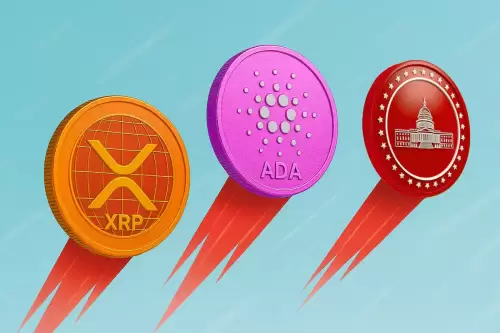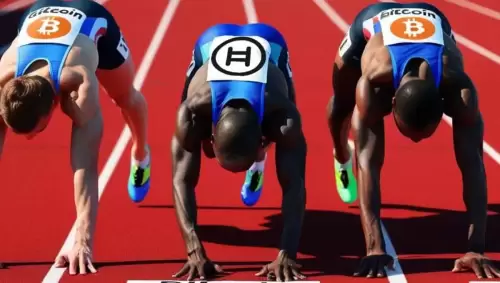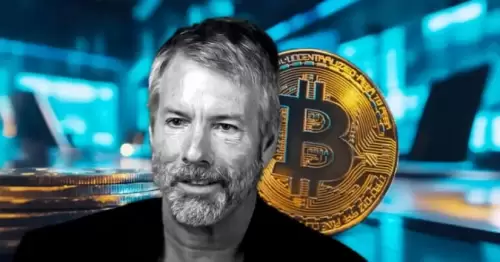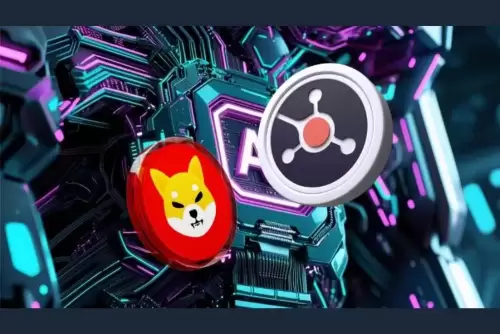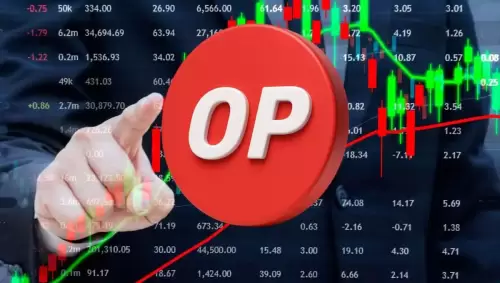 |
|
 |
|
 |
|
 |
|
 |
|
 |
|
 |
|
 |
|
 |
|
 |
|
 |
|
 |
|
 |
|
 |
|
 |
|
Cryptocurrency News Articles
Well-Known Researcher and XRP Community Figure Has Presented What They Believe Is Evidence That XRP May Be the Next Bitcoin
May 17, 2025 at 12:03 am
A well-known researcher and XRP community figure has presented what they believe is evidence that XRP may be the next Bitcoin.

A well-known researcher and figure in the XRP community has presented what he believes is evidence that XRP (XRP) may be the next Bitcoin (BTC).
For context, media figure Dave Portnoy recently shared in an interview that he’s invested in XRP. Interestingly, he admitted his decision was not from deep research but rather from the fear of missing out.
Portnoy explained that if XRP turns out to be the next Bitcoin, experiencing a massive surge in value, he does not want to miss out. He's also aware that many people are keeping an eye on his investment move.
Following this, SMQKE, a researcher, brought together information from eight different documents that discussed why XRP could genuinely follow in Bitcoin’s footsteps. These documents, collected from various credible sources over the years, point to XRP’s features and growing relevance in global finance.
One report from December 2022, titled First Demonstration Experiment for Energy Trading System EDISON-X using XRP Ledger, shares how the XRP Ledger (XRPL) uses a different approach than Bitcoin or Ethereum to process transactions.
Specifically, the XRPL relies on a system called the Federated Byzantine Agreement, which allows it to process transactions in just 3 to 4 seconds, at a very low cost, less than a penny, and with high scalability.
This makes it ideal for quick and inexpensive payments, but also opens the door to other uses like NFTs and DeFi. The report also noted that the XRP Ledger became carbon neutral in 2020, an important point as more industries aim to reduce their environmental impact.
Meanwhile, another mention came from Dcfintechweek, where industry experts highlighted the importance of cryptocurrencies that serve a purpose. Interestingly, the report named XRP as one of the digital assets that is helping drive real progress in finance.
Further, SMQKE also pointed to a document from Morgan Stanley. It recognized that XRP’s process of confirming transactions is far more energy-efficient than Bitcoin’s. It highlighted how Bitcoin's PoW system consumes a vast amount of energy, in contrast to XRP's FBA, which is designed for minimal energy consumption.
Also, while Bitcoin takes around 10 minutes to process a block, XRP gets the job done in just 3 to 5 seconds. This speed difference is significant, especially for time-sensitive financial transactions.
Although the report mentioned that XRP relies on a more centralized process than Bitcoin, it also made clear that XRP's system shares some features with traditional banking. This may be an advantage in terms of adoption and regulation.
In addition, a report from Trade Finance Global mentioned that Ripple (XRP) emerged to improve cross-border payments. The report described XRP as something like "Bitcoin for banks," noting that several large financial institutions are already testing or using Ripple's technology in their operations.
The report highlighted how Ripple's technology offers speed, efficiency, and lower costs compared to traditional cross-border payment systems. It also mentioned that several banks, including Deutsche Bank, are experimenting with Ripple's payment network to streamline foreign exchange transactions.
Moreover, a document from nocash.ro discussed ISO 20022, a global standard for financial messaging. It explained that this standard could help level the playing field between traditional currencies and digital ones.
The document emphasized the importance of interoperability and how ISO 20022 could facilitate the integration of cryptocurrencies into the existing financial ecosystem. It further explained that this standard could promote the development of new financial instruments and services, ultimately benefitting both individual users and the broader economy.
XRP, being one of the few assets ready for ISO 20022, is on track to work alongside central bank digital currencies. According to the document, this is something Bitcoin and many other cryptocurrencies do not have, giving XRP a potential edge.
A report from the Asian Development Bank (ADB) highlighted XRP's unique place in global finance. It explained that while many assets like Bitcoin and Ethereum are often treated as being outside the system, XRP and Ripple are more frequently recognized as part of formal payment networks.
This distinction is crucial, as it suggests that XRP might have a better chance of being accepted and integrated by mainstream financial institutions. The report also touched upon the growing interest in central bank digital currencies (CBDCs), which could play a significant role in the future of money.
SMQKE also presented a 2018 letter sent to the U.S. Federal Reserve by Brenden Sheehan, a concerned banking customer. He recommended the Fed partner with Ripple to modernize outdated U.S. payment systems.
Sheehan praised Ripple's speed, safety, and reliability, highlighting how a recent cross-border payment took just 3.5 seconds and less than a penny in fees using Ripple technology. In contrast, he noted that a traditional SWIFT payment took three days and $25 in fees.
He also
Disclaimer:info@kdj.com
The information provided is not trading advice. kdj.com does not assume any responsibility for any investments made based on the information provided in this article. Cryptocurrencies are highly volatile and it is highly recommended that you invest with caution after thorough research!
If you believe that the content used on this website infringes your copyright, please contact us immediately (info@kdj.com) and we will delete it promptly.























































